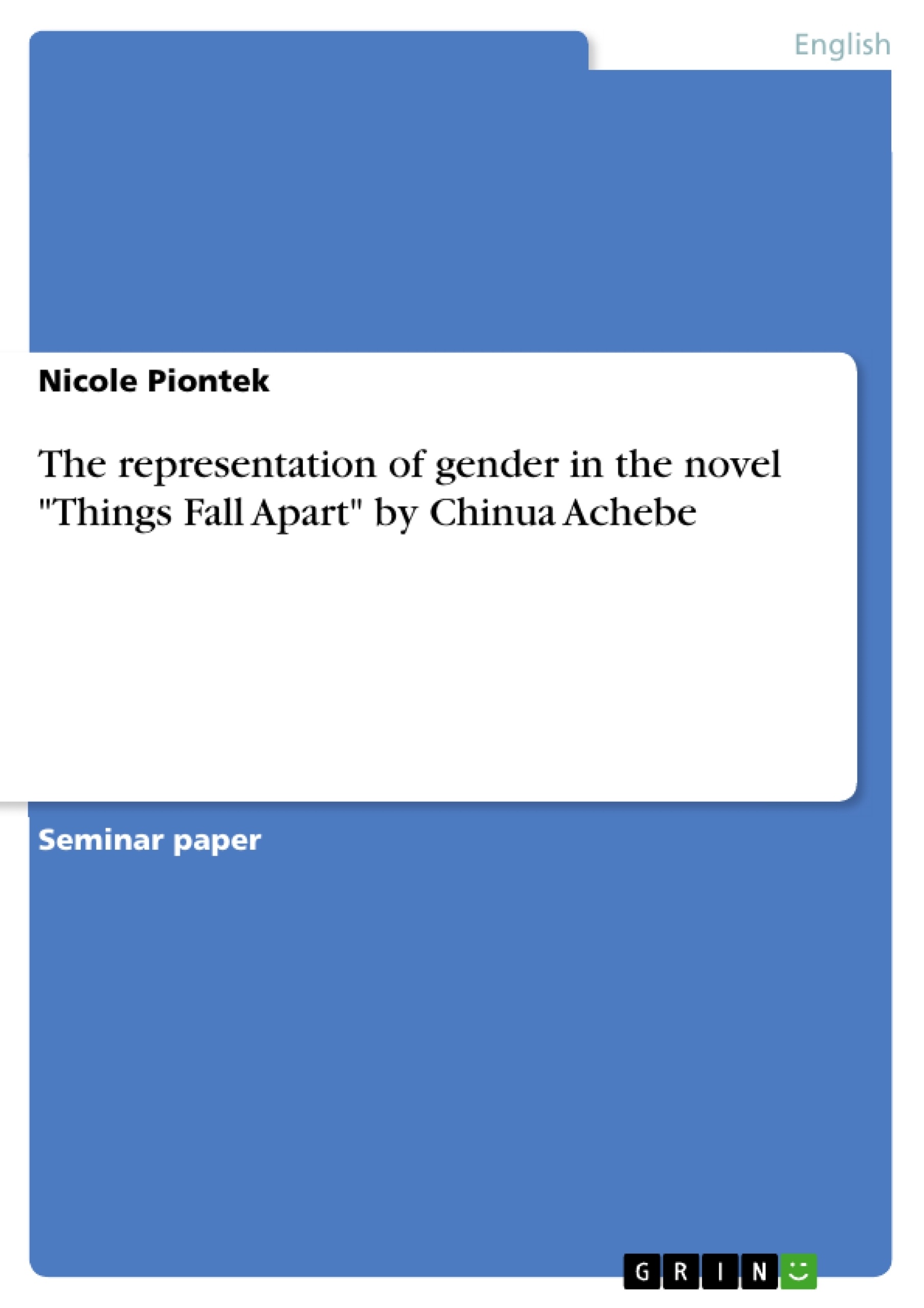This paper is going to argue whether Achebe’s novel “Things Fall Apart” illustrates an Ibo society with socially constructed gender roles. Male dominance and supremacy are visible throughout the whole novel, just as the subordination and discrimination of the female gender. Moreover, the novel depicts numerous gender stereotypes, which will be analysed in this paper to achieve a better understanding of the gender ideologies in Achebe’s society. Strong gender roles can be seen in various situations in the life of Okonkwo, which is why this paper is going to be focussed on different aspects in the life of the protagonist of the novel. Beside the question whether “Things Fall Apart” portrays strong masculine dominance, the following questions will be answered: Are there differences in the various spaces regarding gender roles in the novel? Is there an aspect in Ibo’s society in which the subordination of women is broken? These questions allow the paper to take female rebellion into consideration and to keep the analysis open to a variety of readings of the novel without purely focussing on the reader’s first impression of the dominance of manhood.
Table of Contents
- Introduction
- Exploration of Gender Roles
- Conceptualizing Gender
- Gender in the traditional Ibo society
- Gender in Achebe's Things Fall Apart
- Okonkwo and his father in comparison
- Family and Property
- Public Life
- Religion and the divine
- Conclusion
- Bibliography
Objectives and Key Themes
The paper explores the representation of gender roles in Chinua Achebe's novel "Things Fall Apart." It examines the extent to which the novel depicts an Ibo society with socially constructed gender roles, focusing on male dominance and the subordination of women. The paper analyzes gender stereotypes and ideologies within the novel, particularly through the lens of Okonkwo's life. Additionally, it investigates whether there are differences in gender roles across various social spheres in the novel and whether there are instances where women defy their subordinate roles.
- Socially constructed gender roles in Ibo society
- Male dominance and the subordination of women
- Gender stereotypes and ideologies
- The role of gender in Okonkwo's life
- Variations in gender roles across different social spheres
Chapter Summaries
- Introduction: The introduction establishes the paper's aim to investigate the representation of gender roles in "Things Fall Apart." It introduces the key questions and themes that will be explored in the analysis. The paper also contextualizes its approach to gender roles by acknowledging the historical context of Achebe's novel and its analysis from a contemporary perspective.
- Exploration of Gender Roles: This section provides a conceptual framework for understanding gender roles, drawing on key terms and concepts from gender studies. It highlights the distinction between sex and gender, explaining how gender is socially constructed and how gender ideologies shape societal expectations and hierarchies. It also examines the role of gender stereotypes in perpetuating and reinforcing these inequalities.
- Gender in Achebe's Things Fall Apart: This chapter analyzes the depiction of gender roles in "Things Fall Apart," focusing on different aspects of the novel. It explores the character of Okonkwo and compares him to his father, examining how their contrasting personalities affect the portrayal of masculinity in the novel. The section on "Family and Property" analyzes the roles of men and women in private life. The section on "Public Life" investigates the portrayal of gender dynamics in social settings. Finally, the section on "Religion and the Divine" examines the intersection of gender and religion in the Ibo belief system.
Keywords
Key terms and concepts explored in the paper include: gender roles, social construction of gender, gender ideologies, gender stereotypes, male dominance, female subordination, sexism, patriarchal society, "Things Fall Apart," Chinua Achebe, Okonkwo, Ibo society, and traditional African culture.
- Citation du texte
- Nicole Piontek (Auteur), 2021, The representation of gender in the novel "Things Fall Apart" by Chinua Achebe, Munich, GRIN Verlag, https://www.grin.com/document/1168357



